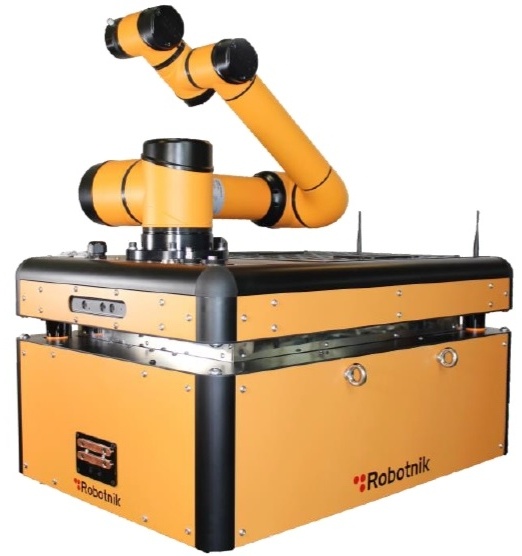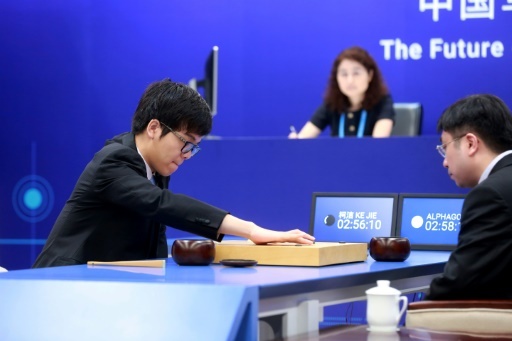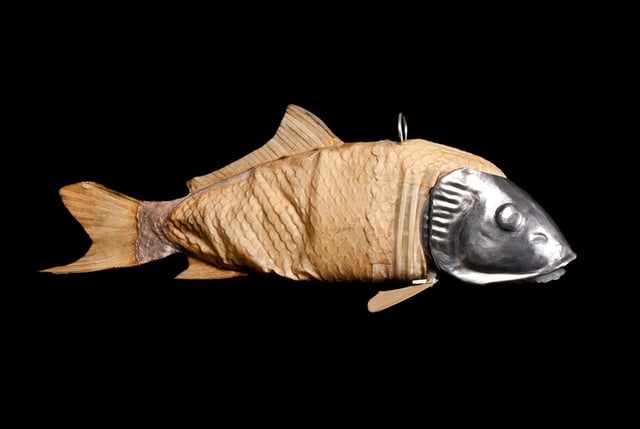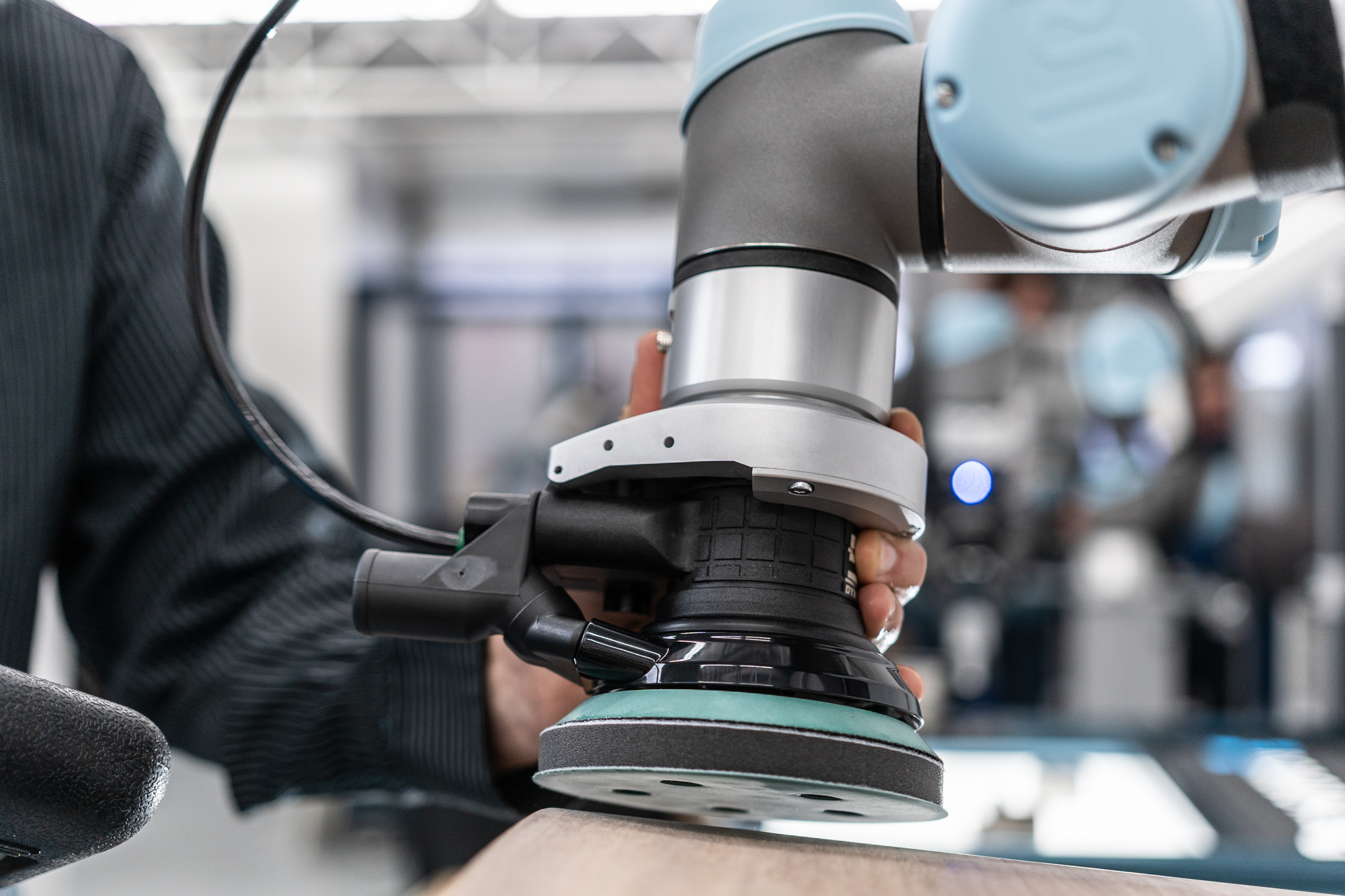What's New in Robotics This Week - May 26

Posted on May 26, 2017 7:00 AM. 12 min read time
Manufacturing & cobot roundup (inc. a new cobot), AI brief, the problem-solving fishbots, silicon valet, and much more. We hope that the news we have selected will interest and amuse you. Enjoy!
Manufacturing & Cobot Roundup
Fogale Robotics showcased a new robot skin concept aimed at improving cobot proximity sensing this week.
Via eeNewsEurope:
In one demonstration, a plastic arm covered with a shirt sleeve could accurately and dynamically detect human proximity from about 20cm away and every transition up to localized touch.
Asian Robotics Review reflected on the benefits that augmented reality could bring to cobots, while SingularityHub reported on a new system from Boston-based cobot firm Veo that's designed to improve cobots' spatial awareness:
"Our system can understand the space, see what's around the robot, reason about it, and then control the robot so [it] can safely interact with people," said Clara Vu, Veo’s cofounder and VP of Engineering.
Meanwhile, Automation World took a look at case-packing cobots, The Diplomat asked "Who Will Satisfy China’s Thirst for Industrial Robots?" and Businessworld India ran a feature about some of the ways in which cobots are "fuelling job creation and satisfaction":
This phenomenon can be evidently seen in Aurolab, an SME, who handle eye care systems which are associated with Aravind Eye Care Systems, Tamil Nadu. Through use of superior and innovative human-robot collaborative technology, the production improved from 150 to 10,000 Intra Ocular Lenses (IOL) per day. Aurolab have seen a 15% increase in the annual product output.
A Robotiq gripper was spotted on Fox Business...
Did you know that a cobot could be used to help fly a plane in an emergency?
Cobot Baxter took a break to show off its musical skills...
UK-based Loop Technologies showcased an modular manufacturing cell aimed at SMBs.

Via Plant Engineer:
Loop Technology created a cell in a modular format allowing rapid integration with a range of robots including the KUKA KR AGILUS and the KUKA LBR IIWA.
The 2 x 2 meter self-contained ready-to-run format, has successfully removed the barriers of entry into industrial robotics, which has proved very popular, with orders already in place for similar cells.
One of the experts involved in drafting the Made in China 2025 report spoke about plans to manufacture more key robotics components in China in an attempt to reduce the country's reliance on imported robotics equipment.
Via China Daily:
"We aim to increase the market share of homegrown servomotors, speed reducers and control panels in China to over 30 percent by 2018 or 2019," said Qu Xianming, an expert with the National Manufacturing Strategy Advisory Committee.
By then, these indigenous components could be of high enough quality to be exported to foreign countries, Qu said. He said once the target is met, it will lay down a strong foundation for Chinese parts makers to expand their presence.
In collaboration with Gaitech and Smokie Robotics, Robotnik has announced that it will officially unveil its new mobile JR2 cobot at the 2017 IEEE International Conference on Robotics and Automation, which runs all next week in Singapore.
Robotic Magazine reports:

JR2 has as base an omnidirectional platform using 4 high power motor wheels and is able to carry payloads up to 100 Kg. Furthermore, JR2 mounts a 6 DOF high quality industrial collaborative arm that can handle payloads up to 5 Kg (completely extended). The arm can mount almost any standard end effector, including 2/3 finger servo-grippers and range of cameras and sensors.
Is it any wonder the latest analyst report predicts that the global cobot market will grow at 60.3% CAGR during the Period 2017-2021?
AI Brief
In a busy week for AI news, Google's AlphaGo AI beat world number one, 19-year-old Chinese national, Ke Jie, on Thursday, winning the second match in a series of 3.
 Caption: Ke Jie (L) makes a move during the first match against AlphaGo (Via PhysOrg)
Caption: Ke Jie (L) makes a move during the first match against AlphaGo (Via PhysOrg)
AI can help composers create new music, according to a UK-based researcher. Futurism observes that experts differ widely on the future impact of AI and, as if to highlight these differing perspectives, Newsweek ran a piece entitled "How Artifical Intelligence WIll Cure America's Sick Health Care System" while Quartz ran with "When AI Botches Your Medical Diagnosis, Who's To Blame?"
Inverse reported on Google's “AutoML,” which enables neural networks to design other neural networks:

What makes AutoML new is how early into the process of designing a neural net it begins to intervene; AutoML doesn’t just refine simple models that already exist, but selects those models in the first place, and then refines them on its own. In this way, AutoML is a more full-featured version of what normal “ML” was always supposed to be.
Lightmatter won the 2017 MIT $100K Entrepreneurship Competition:

Caption: The victorious Lightmatter team.
While big data sets and the steady advancement of electronic computing hardware have enabled the artificial intelligence revolution, progress in electronics is slowing as the transistor—the workhorse of modern computers—approaches its fundamental size limit," says Nicholas Harris, co-inventor of the startup's optical neural network technology. "At Lightmatter, we're using light to accelerate artificial intelligence. By computing with light, rather than electrical signals, Lightmatter's systems are able to calculate faster and more efficiently than existing artificial intelligence hardware."
The Problem-Solving Fishbots
Chinese researchers investigating the evolution of personality traits in biological and robotic swarms,have created a school of robofish to see what types of behaviors emerge.
 Caption: A problem solver. Credit: BENNY J / GETTY
Caption: A problem solver. Credit: BENNY J / GETTY
Via Cosmos Magazine:
"The aim of the research, led by Wang Chen of Peking University’s State Key Laboratory of Turbulence and Complex Systems, was to use the robotic fish to investigate how personality traits evolved and effective leadership emerged in a group during increasingly difficult tasks.
The results [...] suggest that the evolution of diverse personality types, and the different behaviors informed by personality differences, provides a collective benefit for social groups in successfully overcoming challenges."
It's been a busy week or so for biologically-inspired robots, by the way. We've seen skin-inspired, (other) fish-inspired, and flesh-and-bone inspired designs.
Silicon Valet
French startup Stanley Robotics has raised US$4 million from Elaia Partners, Bpifrance and Idinvest Partners.
Via TechCrunch:
All of this sounds great on paper, but the most reassuring thing is that Stanley Robotics is already operating at Charles-de-Gaulle airport in Paris. It’s been years in the making, but a parking lot is now operated by robots.
The Daily Mail has more.
I'll be back next week with more news from the world of robotics. Until then, hope you enjoy these videos and links!
Robots on drilling platforms: Austrian-German consortium wins international competition (Robohub)
Connecting Regional Robotics Hubs in Europe (RoboValley)
How Automation will affect you (BBC)
U.S. Court of Appeals says hobby drone owners no longer have to register UAS with the FAA (AUVSI)
Grandma’s Little Robot (Scientific American)
Dubai Wants Robots To Make Up 25% Of Its Police Force By 2030 (Futurism)
Waltzing robot teaches beginners how to dance like a pro (New Scentist)
A classroom of robots that chat, count and draw portraits (Wired)
We Trust Heart Surgery Robots More Than Banking Robots (PC Magazine)
Shedding light on how humans walk, with robots (Science Daily)









Leave a comment